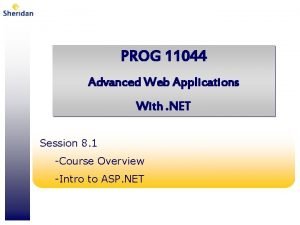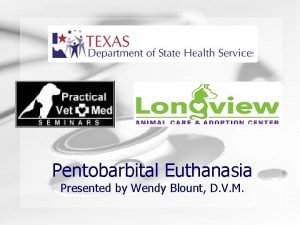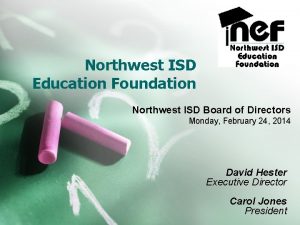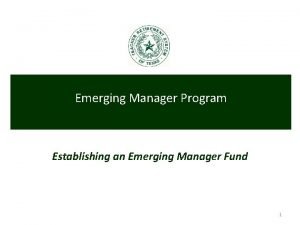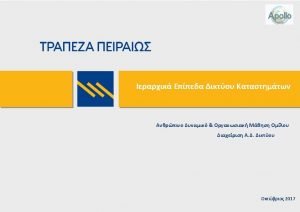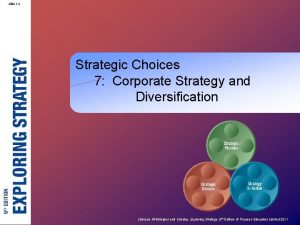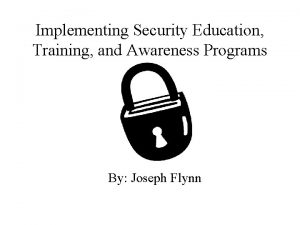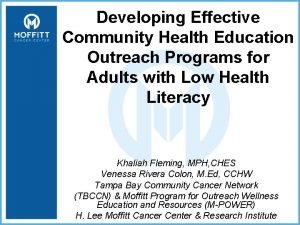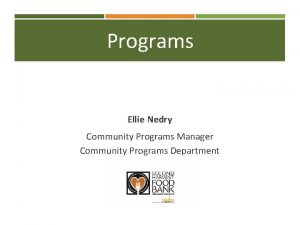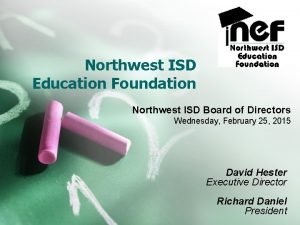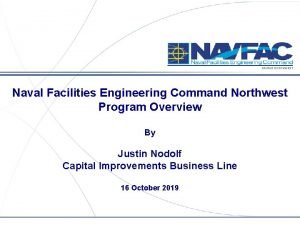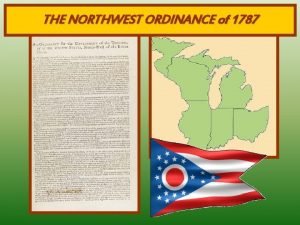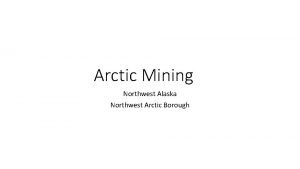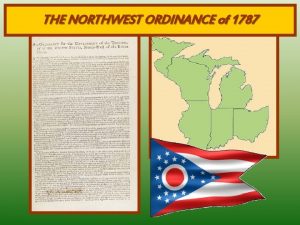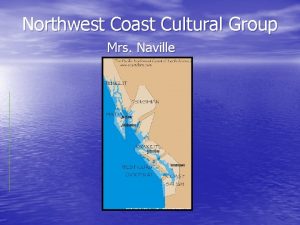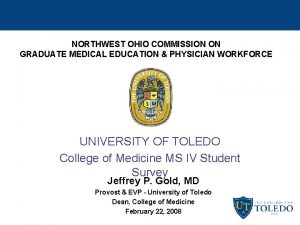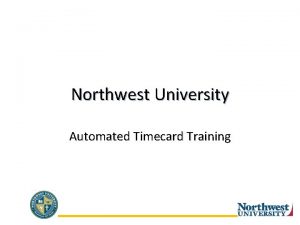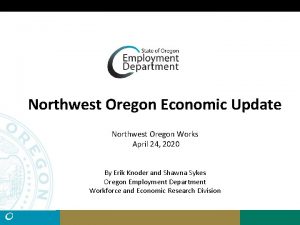Wendi Russac Education Programs Manager Northwest Association for












































































- Slides: 76

Wendi Russac Education Programs Manager Northwest Association for Biomedical Research education. wendi@nwabr. org

The Northwest Association for Biomedical Research • NWABR's mission is to promote the public's trust in biomedical research and its ethical conduct. • Education programs are at the heart of the NWABR mission.

Education in the general community: NWABR seeks to support scientific literacy through outreach programs that: - c Provide student education on scientific topics and research Educate students about careers in biomedicine to help keep the STEM pipeline flowing Encourage personal interactions between scientists, the public, students, and teachers to help demystify the scientific process and contribute to an improved community understanding of science.

Education in the research community: NWABR seeks to ensure that researchers and the research community hold themselves to the highest standards of ethical conduct in their research roles. NWABR hosts conferences that focus on: - the ethical uses of animals in research - the ethical use of humans in research how research institutions can keep their research subjects, their staff and their facilities safe

Code Cracking: Decoding Cancer causing mutations Wendi Russac Education Programs Northwest Association for Biomedical Research

Why would you want to to talk about cancer in your classroom?

● NGSS alignment HS-LS 1 -1: From Molecules to Organisms—Structures and Processes. Construct an explanation based on evidence for how the structure of DNA determines the structure of proteins, which carry out the essential functions of life through systems of specialized cells. HS-LS 1 -4: From Molecules to Organisms—Structures and Processes. Use a model to illustrate the role of cellular division (mitosis) and differentiation in producing and maintaining complex organisms. HS-LS 3 -2: Heredity—Inheritance and Variation of Traits. Make and defend a claim based on evidence that inheritable genetic variations may result from (1) new genetic combinations from meiosis, (2) viable errors occurring during replication, and/or (3) mutations caused by environmental factors. ● Multiple built in opportunities for cross curriculum integration

Why is cancer a topic that will engage your students?

Key Facts: Cancer is a big deal • An estimated 1, 735, 350 new cases of cancer were estimated to be diagnosed in the United States in 2018 with 609, 640 people dying from the disease. • Estimated expenditures in the United States in 2017 were $147. 3 billion. • Globally, cancer is the second leading cause of death, and was responsible for an estimated 9. 6 million deaths in 2018. Globally, about 1 in 6 deaths are due to cancer. • The economic impact of cancer is significant and is increasing. The total annual economic cost of cancer in 2010 was estimated at approximately $ 1. 16 trillion in US dollars. Source: https: //www. cancer. gov/about-cancer and https: //www. who. int/news-room/fact-sheets/detail/cancer

Brief Overview of Code Cracking Curriculum: Time: 3 or more 50 minute class periods Subject & Grade Level(s): High School Biology ● Students investigate and understand that cancer is a genetic disease and is the result of an accumulation of mutations in the genes that control cell proliferation. ● Students learn that cancer disproportionately affects different populations and different regions of the globe and learn about risk factors and prevention strategies to help them understand some of the reasons for these disparities. ● In a culminating mini-project, students conduct online research on the global disparities of cancer investigating either a type of cancer across multiple countries/regions or the rates of different types of cancer in a single country/region.

Day One investigative questions: ● What causes cancer? ● What are the exposures and events that lead to cancer? ● Are there preventative measures that can help reduce cancer risks? Day Two investigative questions: ● What are genetic mutations? ● What types of genes are mutated in cancer cells? Day Three investigative questions: ● What factors might account for disparities in cancer types and rates in different countries around the world? ● Given the limited funding dedicated to non-communicable diseases around the world, how could those resources best be spent?

Cancer: Myths and Misconceptions What do you believe?

Cancer: True or False? 1. The rates of cancer deaths in the United States are increasing. T F 1. Cancer is contagious. T 1. F Lunchmeat can cause cancer. T F 1. There are over one hundred types of cancer. T F 1. Unhealthy lifestyle choices when you are young don’t affect your chances of getting cancer when you are older. T F 1. Cancer cells can grow forever. T F 1. Cancer cells grow and divide in a controlled fashion. T F 1. We currently have cures for cancer, but the medical industry keeps them from the public because they make so much money treating cancer patients. T F

Cancer: True or False? The rates of cancer deaths in the United States are increasing. ? ?

False

Cancer: True or False? Cancer is contagious.

False Cancer is not Contagious However, certain diseases may increase your risk of acquiring cancer.

Cancer: True or False? Lunchmeat can cause cancer.

True All processed meat can increase your risk of getting cancer.

Cancer: True or False? There are over one hundred types of cancer.

True

Cancer: True or False? Unhealthy lifestyle choices when you are young don’t affect your chances of getting cancer when you are older.

False

Cancer: True or False? Cancer cells can grow forever.

True

Cancer: True or False? Cancer cells grow and divide in a controlled fashion.

False

Cancer: True or False? We currently have cures for cancer, but the medical industry keeps them from the public because they make so much money treating cancer patients.

False

Cancer: True or False? Cancer develops because of changes in our DNA that result in abnormal gene function.

True Cancer is a genetic disease caused by changes in genes that normally control the growth and death of cells.

Key Facts: • In a healthy organism, cell division is required for growth and repair. • Humans have around 37 trillions cells • At least 20 billion (possibly as many as 2 trillion) cells divide every day. • Cancer begins when a cell can not stop dividing when it is supposed to stop.

Cancer: Key Facts • Cancer is a genetic disease caused by changes in genes that normally control the growth and death of cells. • It is an accumulation of these mutations that leads to uncontrolled cell proliferation. The current cancer model suggests that a single cell must acquire a minimum of six mutations in genes that control cell proliferation to become cancerous. Certain lifestyle and environmental factors can change, or mutate, normal genes into genes that allow and promote the growth of cancer. •

The Molecular Basis of Cancer

These exposures increase the risk of cancer because of their capacity to cause: DNA Damage Chemical Biological Physical

Cancer as a Genetic Disease Students will need a basic understanding of DNA transcription and translation as a foundation for the rest of the unit. The following videos can serve either as a review or brief introduction “What is DNA and how does it work? ” (5 minutes) https: //www. youtube. com/watch? v=zwibg. NGe 4 a. Y “What is a gene? ” (5 minutes) https: //www. youtube. com/watch? v=5 MQd. Xj. RPHm. Q

DNA Review ● DNA or deoxyribonucleic acid is a long molecule that contains our unique genetic code. Like a recipe book it holds the instructions for making all the proteins in our bodies. ● DNA contains four basic building blocks or bases (also called nucleotides) adenine (A) thymine (T) (RNA uses Uracil) cytosine (C) guanine? (G) ● Each strand is composed of long sequences of the four bases, A, C, G and T. ● The order, or sequence, of these bases form the instructions in the genome. ● The bases on one strand of the DNA molecule pair together with complementary bases on the opposite strand of DNA to form the ‘rungs’ of the DNA ‘ladder’.

The Genetic Code Review • The genetic code is a set of rules by which information is encoded on DNA is used to make proteins. • A gene is a section of DNA that codes for a unique protein. • The sequence of bases are read 3 bases at a time. • These 3 base (nucleotide) sequences code for specific amino acids. • Proteins are made up of amino acid sequences. • By looking at the order of bases on a DNA sample we can read, or translate, the code and determine the structure of a protein.

Central Dogma ● Genes code for proteins, which are the workhorses of the cell. ● Proteins are responsible for a cell’s structure, function, and regulation.

Protein Synthesis Decoder 1. 2. 3. 4. DNA Transcribe DNA to m. RNA: Pair C with G, G to C, T to A, A to U Translate m. RNA in triplets, or codons, and find the corresponding amino acid 3 letter abbreviation Find and record the one letter symbol for the amino acid If you have accurately translated you protein it will spell out a word or phrase in English ------> m. RNA ----> GAA TAG AAA CTT ACT TAG AGC ATT CCT GCC CTT CUU AUC UUU GAA UGA AUC UCG. . . . Amino Acid --> Leu Iso Phe Glu. . . Iso. . . … Symbols ----> L I F E . . . I . . . .

Protein Synthesis Decoder 1. DNA: CTT CCA CCT m. RNA: AA: Symbol: ● ● Transcribe DNA to m. RNA: Pair C with G, G to C, T to A, A to U Translate m. RNA in triplets, or codons, and find the corresponding amino acid Find and record the one letter symbol for the amino acid If you have accurately translated you protein it will spell out a word or phrase in English

Protein Synthesis Decoder 2. DNA: GTGCTTTTA m. RNA: AA: Symbol: ● ● Transcribe DNA to m. RNA: Pair C with G, G to C, T to A, A to U Translate m. RNA in triplets, or codons, and find the corresponding amino acid Find and record the one letter symbol for the amino acid If you have accurately translated you protein it will spell out a word or phrase in English

Protein Synthesis Decoder 3. DNA: GGTCGTACC m. RNA: AA: Symbol: ● ● Transcribe DNA to m. RNA: Pair C with G, G to C, T to A, A to U Translate m. RNA in triplets, or codons, and find the corresponding amino acid Find and record the one letter symbol for the amino acid If you have accurately translated you protein it will spell out a word or phrase in English

Protein Synthesis Decoder 4. DNA: TCGTTCTAA m. RNA: AA: Symbol: ● ● Transcribe DNA to m. RNA: Pair C with G, G to C, T to A, A to U Translate m. RNA in triplets, or codons, and find the corresponding amino acid Find and record the one letter symbol for the amino acid If you have accurately translated you protein it will spell out a word or phrase in English

Challenge Sequence Options: • Distribute one or more longer sequence to each student to decode. Example: AGAACATAACTCTTAACACTCTAAAGACCAGCACTCCGATGA Decodes to: Science is great • Ask students to write their own phrase or sentence.

Optional Online Protein Decoder Go to: https: //skaminsky 115. github. io/nac/DNA-m. RNAProtein_Converter. html • Click on DNA • Enter your sequence directly or with the 4 letter keyboard • Click on Convert • Scroll down to read your output


• What are gene mutations? • What types of genes are mutated in cancer cells?

Day Two: Investigative Questions • What are gene mutations? • What specific types of genes are mutated in cancer cells?

Mutation: A change in the DNA sequence, either due to mistakes during replication or as a result of environmental factors.

What happens if a cell’s DNA acquires a mutation?

Substitutions or Point Mutations A substitution is a mutation that exchanges one base for another (i. e. , a change in a single "chemical letter" such as switching an A to a G). Such a substitution could: 1. Change a codon to one that encodes the same amino acid and causes no change in the protein produced. These are called silent mutations. 2. Change a codon to one that encodes a different amino acid and cause a small change in the protein produced. For example, sickle cell anemia is caused by a substitution in the beta-hemoglobin gene, which alters a single amino acid in the protein produced. This is a missense mutation. 3. Change an amino-acid-coding codon to a single "stop" codon and cause an incomplete protein. This can have serious effects since the incomplete protein probably won't function. This is a nonsense mutation. Source: https: //evolution. berkeley. edu

Insertions and Deletions Insertions are mutations in which extra base pairs are inserted into a new place in the DNA. Deletions are mutations in which a section of DNA is lost, or deleted. Frameshift Since protein-coding DNA is divided into codons three bases long, insertions and deletions can alter a gene so that its message is no longer correctly parsed. These are the most serious types of mutations since the sequence can no longer be read correctly to produce a functional protein. Source: https: //evolution. berkeley. edu

Decoding Mutations

Decoding Mutations Following the same procedure you followed during the decoding activity (DNA to m. RNA to Amino Acid) decode the original and mutated sequences and identify them as one of the three types of mutations listed above. If it is a point mutation, try and note whether it is a missense, silent or nonsense mutations. The original DNA sequence is: TGCGTGCTTAAGCGGTGTACACGTTGC DNA: TGC GTG CTT AAG CGG TGT ACA CGT TGC m. RNA: ACG CAC GAA UUC GCC ACA UGU GCA ACG Amino acid: Thr His Glu Phe Ala Thr Cys Ala Thr Symbols The fat cat

THE FAT CAT

DNA: TGC GTG CTT AAG CGA TGT ACA CGT TGC m. RNA: AA: Symbol: ● ● Transcribe DNA to m. RNA: Pair C with G, G to C, T to A, A to U Translate m. RNA in triplets, or codons, and find the corresponding amino acid Find and record the one letter symbol for the amino acid If you have accurately translated you protein it will spell out a word or phrase in English

THE FAT CAT

Protein Synthesis Decoder DNA: TGC GTG CTT AAG CGG TGT GCA CGT TGC m. RNA: AA: Symbol: ● ● Transcribe DNA to m. RNA: Pair C with G, G to C, T to A, A to U Translate m. RNA in triplets, or codons, and find the corresponding amino acid Find and record the one letter symbol for the amino acid If you have accurately translated you protein it will spell out a word or phrase in English

THE FAT RAT

Protein Synthesis Decoder 4. DNA: TGC GTG CTT AAG TGT ACA CGT TGC m. RNA: AA: Symbol: ● ● Transcribe DNA to m. RNA: Pair C with G, G to C, T to A, A to U Translate m. RNA in triplets, or codons, and find the corresponding amino acid Find and record the one letter symbol for the amino acid If you have accurately translated you protein it will spell out a word or phrase in English

THE FIT CAT

Frameshift Mutations What if the insertion or deletion is 3 bases long? Or a multiple of 3 bases?

Protein Synthesis Decoder 4. DNA: TGC GTG CTT AAG GAG CGG TGT ACA CGT TGC m. RNA: AA: Symbol: ● ● Transcribe DNA to m. RNA: Pair C with G, G to C, T to A, A to U Translate m. RNA in triplets, or codons, and find the corresponding amino acid Find and record the one letter symbol for the amino acid If you have accurately translated you protein it will spell out a word or phrase in English

THE FLAT CAT

Cancer Key Facts: • The human genome has approximately 30, 000 genes but only a small number of them have been associated with cancer. • Usually a cell must accumulate at least six mutated genes before it becomes cancerous.

The types of genes that are mutated in cancer cells can be broadly classified into three groups. • Oncogenes are the mutated form of proto-oncogenes which normally code for proteins that enhance cell division or inhibit normal cell death. Mutated oncogenes result in cells that always have a “green light” for growth. (Gas pedal always down). • Tumor suppressors genes are normal genes that slow down cell division, repair DNA mistakes, or tell cells when to die. Mutated oncogenes never turn on the “red light”. (No brakes). – Growth regulation genes code for proteins that slow down cell growth. – Tumor repair genes code for proteins whose normal function is to correct errors that arise when cells duplicate their DNA prior to cell division. Many are tumor suppressor genes. – Apoptosis genes code for proteins that trigger “cellular suicide” and can eliminate potentially cancerous cells.

Cancer causing mutations occur in the genes that regulate the cell cycle. Cell Cycle Regulation is required for normal cell growth Credit: www. robertlfurler. com

Cell Cycle Exploration Go to: https: //media. hhmi. org/biointeractive/click/cellcycle • Start by reading the “Background” tab. • Click on the “Cell cycle phases” in the middle purple circle and explore each phase starting with G 1. • Click on the “Cell cycle regulators and cancers” in the middle circle and explore each phase again. Can you identify any oncogenes or tumor suppressor genes? • Answer the questions on the worksheet.

Optional Cell Cycle Exploration Go to: http: //www. mhhe. com/biosci/genbio/virtual_labs_2 K 8/la bs/BL_03/index. html • Explore and answer the questions on the worksheet.

Day Three: Investigative Questions and Mini Project • What factors might account for disparities in cancer types and rates in different countries around the world? • Given the limited funding dedicated to noncommunicable (not infectious) diseases around the world, how could those resources best be spent?

Questions about this curriculum ? ? ?

Questions for you… Why is this topic/phenomenon/challenge important? How is it relevant to my students? · · How might you visualize this activity work with your students? What adaptations would you need to make? · Where in your scope and sequence would this activity possibly fit? · How would it help to build upon, align to, or expand student learning in one of your existing units of instruction? · How does this learning activity connect to or leverage students’ everyday interests and areas of expertise? · As part of this learning activity, how might you assess students’ demonstration of their knowledge and scientific/engineering practices?

Break

Other NWABR education programs of interest: ● Camp BIOmed ● Camp LITE ● Youth Ethics Summits

NWABR Research Ambassador Program Class presentations by guest science professionals providing an inside look at biomedical research as well as science career inspiration ● Virtual presentations ● Mini-sessions available to fit into shortened class times ● Scientists provide a recorded or live talk, or offer live Q&A “Ask a Scientist” ● Current research, hot topics or careers ● Free of charge Contact: Jen Wroblewski, NWABR Public Engagement Manager engagement@nwabr. org | 206957 -3337
 Wendi jollymore
Wendi jollymore Canine lateral saphenous vein
Canine lateral saphenous vein Disadvantages of waterfall model in software engineering
Disadvantages of waterfall model in software engineering Northwest education foundation
Northwest education foundation List of emerging manager programs
List of emerging manager programs Senior manager vs general manager
Senior manager vs general manager Portfolio manager synergy manager parental developer
Portfolio manager synergy manager parental developer Seta program 5 steps
Seta program 5 steps Community health education outreach programs
Community health education outreach programs Iso 22301 utbildning
Iso 22301 utbildning Novell typiska drag
Novell typiska drag Nationell inriktning för artificiell intelligens
Nationell inriktning för artificiell intelligens Returpilarna
Returpilarna Varför kallas perioden 1918-1939 för mellankrigstiden?
Varför kallas perioden 1918-1939 för mellankrigstiden? En lathund för arbete med kontinuitetshantering
En lathund för arbete med kontinuitetshantering Kassaregister ideell förening
Kassaregister ideell förening Tidböcker
Tidböcker Sura för anatom
Sura för anatom Densitet vatten
Densitet vatten Datorkunskap för nybörjare
Datorkunskap för nybörjare Tack för att ni lyssnade bild
Tack för att ni lyssnade bild Hur skriver man en debattartikel
Hur skriver man en debattartikel Magnetsjukhus
Magnetsjukhus Nyckelkompetenser för livslångt lärande
Nyckelkompetenser för livslångt lärande Påbyggnader för flakfordon
Påbyggnader för flakfordon Tryck formel
Tryck formel Publik sektor
Publik sektor Jag har nigit för nymånens skära text
Jag har nigit för nymånens skära text Presentera för publik crossboss
Presentera för publik crossboss Teckenspråk minoritetsspråk argument
Teckenspråk minoritetsspråk argument Bat mitza
Bat mitza Klassificeringsstruktur för kommunala verksamheter
Klassificeringsstruktur för kommunala verksamheter Fimbrietratt
Fimbrietratt Bästa kameran för astrofoto
Bästa kameran för astrofoto Centrum för kunskap och säkerhet
Centrum för kunskap och säkerhet Programskede byggprocessen
Programskede byggprocessen Mat för unga idrottare
Mat för unga idrottare Verktyg för automatisering av utbetalningar
Verktyg för automatisering av utbetalningar Rutin för avvikelsehantering
Rutin för avvikelsehantering Smärtskolan kunskap för livet
Smärtskolan kunskap för livet Ministerstyre för och nackdelar
Ministerstyre för och nackdelar Tack för att ni har lyssnat
Tack för att ni har lyssnat Hur ser ett referat ut
Hur ser ett referat ut Redogör för vad psykologi är
Redogör för vad psykologi är Stål för stötfångarsystem
Stål för stötfångarsystem Atmosfr
Atmosfr Borra hål för knoppar
Borra hål för knoppar Orubbliga rättigheter
Orubbliga rättigheter R formel
R formel Tack för att ni har lyssnat
Tack för att ni har lyssnat Rita perspektiv
Rita perspektiv Vad är verksamhetsanalys
Vad är verksamhetsanalys Tobinskatten för och nackdelar
Tobinskatten för och nackdelar Toppslätskivling dos
Toppslätskivling dos Mästar lärling modellen
Mästar lärling modellen Egg för emanuel
Egg för emanuel Elektronik för barn
Elektronik för barn Antikt plagg i rom
Antikt plagg i rom Strategi för svensk viltförvaltning
Strategi för svensk viltförvaltning Kung dog 1611
Kung dog 1611 Ellika andolf
Ellika andolf Ro i rom pax
Ro i rom pax Tack för att ni lyssnade
Tack för att ni lyssnade Multiplikation med decimaltal uppgifter
Multiplikation med decimaltal uppgifter Dikt bunden form
Dikt bunden form Inköpsprocessen steg för steg
Inköpsprocessen steg för steg Rbk fuktmätning
Rbk fuktmätning Ledarskapsteorier
Ledarskapsteorier Exspektans eller expektans
Exspektans eller expektans Myndigheten för delaktighet
Myndigheten för delaktighet Trög för kemist
Trög för kemist Tillitsbaserad ledning
Tillitsbaserad ledning Läkarutlåtande för livränta
Läkarutlåtande för livränta Kraftledning karttecken
Kraftledning karttecken Skapa med geometriska former
Skapa med geometriska former Shaktismen
Shaktismen Vanlig celldelning
Vanlig celldelning
